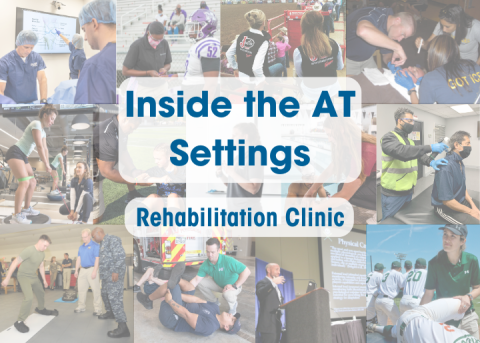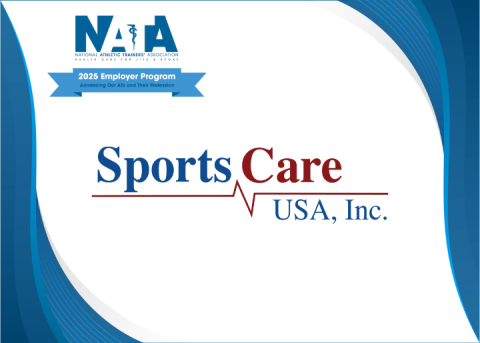
Introduced in the April NATA News, this NATA Now article series provides insight into the different athletic training settings as well as information athletic training students and interested ATs need to know. The series also provides tips from members on how to succeed in each setting.
Paul Higgs, MEd, LAT, ATC, director at Valdosta State University’s Center for Exercise Medicine and Rehabilitation Athletic Training Clinic, has been in the rehabilitation clinic setting for 12 years. Higgs said after working in the NCAA Division II athletics for 20 years, he was interested in focusing on his favorite niches of teaching and rehabilitation at Valdosta State University.
“The opportunity to return to my alma mater to work in this unique facility greatly appealed to me,” he said.
Higgs sheds light on the rehabilitation/clinic setting and provides tips for advancement in the setting.
Typical Makeup of Your Population
Our state practice act allows licensed athletic trainers to see anyone who is referred by a physician. About 25% of my patients are students and 75% are completely unrelated to the university, but all are referred to me by our local physicians. Anyone who is physically active can benefit from the services of a certified/licensed athletic trainer.
Non-AT-Related Skills/Education/Certification Required or Helpful for Your Setting
The ability to interact with a wide variety of patient populations and backgrounds is beneficial in the rehabilitation clinic. I must build trust and rapport with people who I just met, generally on a day they aren’t feeling their best due to a recent injury or surgery. In a school setting, I may have known this patient for years before our interactions in health care; but in the rehabilitation clinic, most of the patients are new to me. I only have a few minutes, at best, to gain their trust and show them that my recommendations will help them. Patients will never care how much you know until they know how much you care.
Common Injuries Observed or Encountered in Your Setting
About half of my patients are referred for post-surgical rehabilitation including rotator cuff repairs, ACL reconstructions, etc. The others are referred for acute or chronic conditions, such as ankle sprains, low back pain, concussions, rotator cuff strains, etc. I see a good balance of sub-acute and chronic conditions in the clinic. The majority are musculoskeletal injuries.
Traits of a Successful AT in Your Setting
Athletic trainers who will do well in the rehabilitation clinic setting are similar to those who succeed in any other setting: They have a desire to help others achieve their goals and make a positive impact on others through health care. The rehabilitation clinic setting usually requires a fee for service – either paid by the patient or the insurance company – and the visits may be limited. I must make sure the patient feels they’re getting their money’s worth and that my recommendations will be helpful to them. I must help ease the immediate pain of the situation in a way that helps them develop long-term function and return to preinjury activity levels. It’s very much a business, and a good understanding of general business principles will be helpful to any AT in this setting.
Misconceptions About Your Setting and/or Patient Population
Some ATs aren’t interested in the rehabilitation clinic setting because they only want to “work with athletes.” Our curriculum teaches us how to positively impact any physically active population – not only the jersey-wearing, ball-carrying types. We can work with so many different types of patients. Not all are trying to play in the big game this weekend, but most of them will work to achieve their goals if they have the right direction and encouragement (and see results relatively quickly). Also, everything in the rehabilitation clinic setting is not based on insurance reimbursement. Your value as a health care provider is determined by the work you do. Provide a good service, help people reach their goals, be professional and have fun. Do those things and people will be glad to pay you. Some will choose to use insurance.





